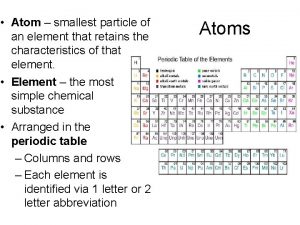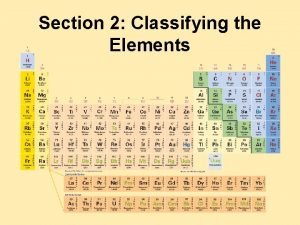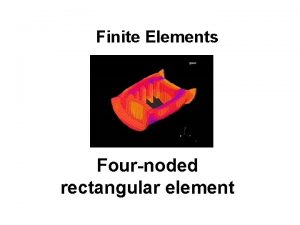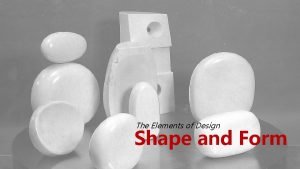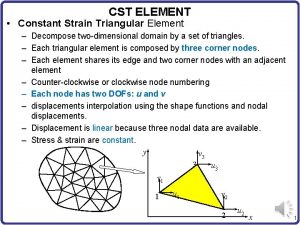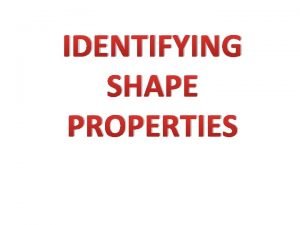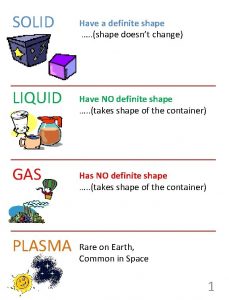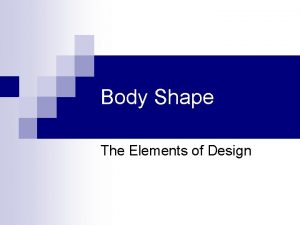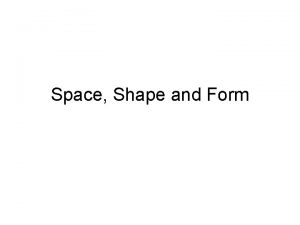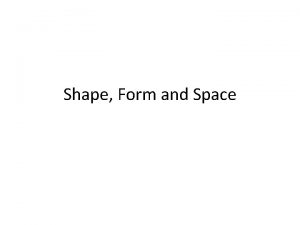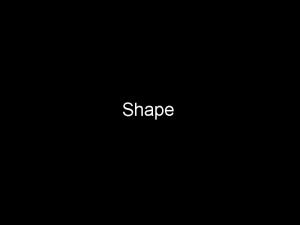Whats my shape Element Shape What is shape















- Slides: 15

What’s my shape? Element - Shape

What is shape? • Shape pertains to the use of areas in two-dimensional space that can be defined by edges. [1] Shapes can be geometric (e. g. , square, circle, hexagon, etc. ) or organic (such as the shape of a puddle, blob, leaf, boomerang, banku, etc. ).

Giving the subject a shape • Shape is a two-dimensional element basic to picture composition and is usually the first means by which a viewer identifies an object within the picture • Shapes can be made more dominant by placing them against plain contrasting backgrounds; for example, consider again the white sail against the dark water background.

• The greatest emphasis of shape is achieved when the shape is silhouetted • Silhouettes can create a free shape.

• Isolating a subject’s unique shape is an effective way to create an image with dramatic impact. • Successful material can be found by shooting directly upwards and finding unusual shapes outlined against the sky

Lighting can create shapes • Another way to highlight an object’s shape is by using lighting effects — for instance, interposing the object between the camera and a light source to create a stark silhouette

Why create shape in a picture? • The way subjects connect to each other in a photo forms shapes that draw the eye from subject to subject. • If a photograph's composition lacks shape, the photo becomes too busy or awkward to fully appreciate.

Shapes in Photography • Some shapes are more effective than others in providing an interesting frame for your photo. • For instance, squares and circles tend to be too symmetrical and leave too much empty space around the subjects. • The shapes that work best for composition are triangles and diamonds.

Triangles or Diamonds • Triangles can be formed a few different ways: • If your subject is already triangular or diamond-shaped (like a pyramid), the viewer's eye will automatically focus on that shape.

Triangles or Diamonds • Groups of people can be posed as an irregular triangle. This helps keep people from creating a shapeless blob in a portrait

Triangles in the Negative Space • Different landmarks can be one of three points that form the triangle. • For instance, a person at the forefront of the photo is the first point, a boat far behind the person forms the second point, and an island on the other side of the frame forms the third point

Organic Shapes • Shape is not just limited to silhouettes, of course • Organic shapes occur frequently in nature (hence the name). • They include curves, such as those you might see in the petal of a flower, and irregular shapes such as those you might see on a rock face.

How to get the correct shape • Moving your objects around until your find these pleasing shapes enables you to add dramatic effects to subjects that would otherwise be seen as ordinary.

Your turn • Whenever you’re shooting a scene that doesn’t require you to move fast or lose the shot, take a few moments to carefully examine your surroundings for shape. • If you can’t find any strong shapes in the scene, try a different perspective or angle. • Forcing yourself to notice the shapes in your surroundings will eventually help you develop a natural eye for it.

Assignment • Choose 5 subjects • Shoot 5 pictures of each subject, remember to use at least 2 different points of view. • Each must have a different type of shape represented • Examples: • • • Silhouette Organic shape The shape of an object (many options- square, triangle, rectangle, etc. ) Triangle created in the space around the subject Triangles created by the subject (moving objects into the correct space) The use of lighting to create a shape
 Distinguish between a signal element and a data element.
Distinguish between a signal element and a data element. Signal element vs data element
Signal element vs data element Whats the smallest particle of an element
Whats the smallest particle of an element Whats a main group element
Whats a main group element Whats the smallest particle of an element
Whats the smallest particle of an element Shape function for 4 noded rectangular element
Shape function for 4 noded rectangular element What is shape and form
What is shape and form Properties of cst element
Properties of cst element Whats a shape
Whats a shape Whats hot whats not
Whats hot whats not What shape
What shape Solid liquid gas plasma
Solid liquid gas plasma Wide hips body type
Wide hips body type Cessna airfoil
Cessna airfoil Shape matching and object recognition using shape contexts
Shape matching and object recognition using shape contexts Bolongie
Bolongie


